Confessions of a Recovering Engineer (Wiley, 2021) is an unusual book by a man who I imagine is charismatic in person, Charles Marohn. BikePortland readers who are not already familiar with Marohn will have probably come across the word he coined over a decade ago, “stroad.”
Marohn is the founder of Strong Towns, a movement that advocates “for cities of all sizes to be safe, livable and inviting,” and the concept of a “stroad” is central to his philosophy, kind of like how some branches of Christianity require a devil.
If I keep reaching for religious terms it’s because the book has a moral undercurrent—almost a quest for compassion—that both gives his criticism of the engineering profession its outrage, but also an overall tone of poignancy to his writing.
“You could write this entire book without leaving this city.”
“Stroad” is the nemesis, but roads and streets—and understanding the difference between the two—are the pillars of Marohn’s vision. A road is a “high-speed connection between two places,” and a street is “a platform for building community wealth.” (The second chapter of the book is titled The Difference Between a Road and a Street, that’s how fundamental the concept is to him.)
Urban planners have somewhat embraced this view, but Marohn is bolder than most. He argues that most traffic signals in cities should be replaced with roundabouts, and that traffic speeds should be slashed:
The result of traffic signals is an environment of aggression, where a green light licenses a driver to take ownership of public space to the exclusion of others … Reducing street speeds can increase traffic flow and reduce travel time for most trips, especially when traffic signals are replaced with continuous flow intersections. There is little to no need to create gaps in traffic flow when speeds are low.
His recommended speed for a street is 15 mph. (“For streets, where we need complexity in order to build a productive place, traffic needs to flow at a neighborhood speed (15 mph is optimum)…”)
In a book chock full of ideas, a couple more jumped out at me:
Relying on congestion as traffic calming. The pandemic has created a natural experiment:
With the virus-induced drop in traffic volume, what is being revealed is the overengineering and unsafe design of that occurs throughout our transportation system. Remove the traffic congestion that routinely thwarts high speeds and drivers naturally feel empowered to utilize the full capabilities that have been engineered for them. Speeds go up, and so does the rate of fatalities.
About shovel-ready projects, he writes:
Having gone through the lengthy process of planning and design, when the moment of decision came, local leaders opted to accept their sunk costs and table the project because they could not justify spending local money on it. That is a bad project. Then overnight, with federal stimulus providing the option of using someone else’s money, these projects suddenly became an excellent use of resources.
Marohn illustrates his ideas with engaging stories from cities throughout the US. About a third of the way through the book, however, I noticed that I was substituting streets in Portland for all of his examples. You could write this entire book without leaving this city.
He is a great storyteller, but he also gets into the weeds with the old saws of traffic engineering, like Level of Service and 85th percentile speed measurements, and at one point annihilates a report used to justify a freeway expansion.
The book even ends with a confession (spoiler alert). Marohn shares a final crash story: A driver of a new SUV, music blaring (I’m already disliking this person) gets in a doozy of a classic crash. A left-turning driver who failed to keep her wheels straight while waiting for on-coming traffic to clear, is rear-ended and pushed into the intersection—directly in front of the approaching SUV. The SUV veers, but nevertheless sends the car spinning, and then goes on to level a stop sign, take to the air for a moment, and finally meet a big tree which exacts revenge for the stop sign. A smell of sulfur and smoke ensues.
It wasn’t until several paragraphs into this crash description that I realized that the driver of the SUV was our author, in the palm of whose hand I had been sitting for the previous 223 pages. The entire chapter is a tour de force, and a powerful end to a thought-provoking book.


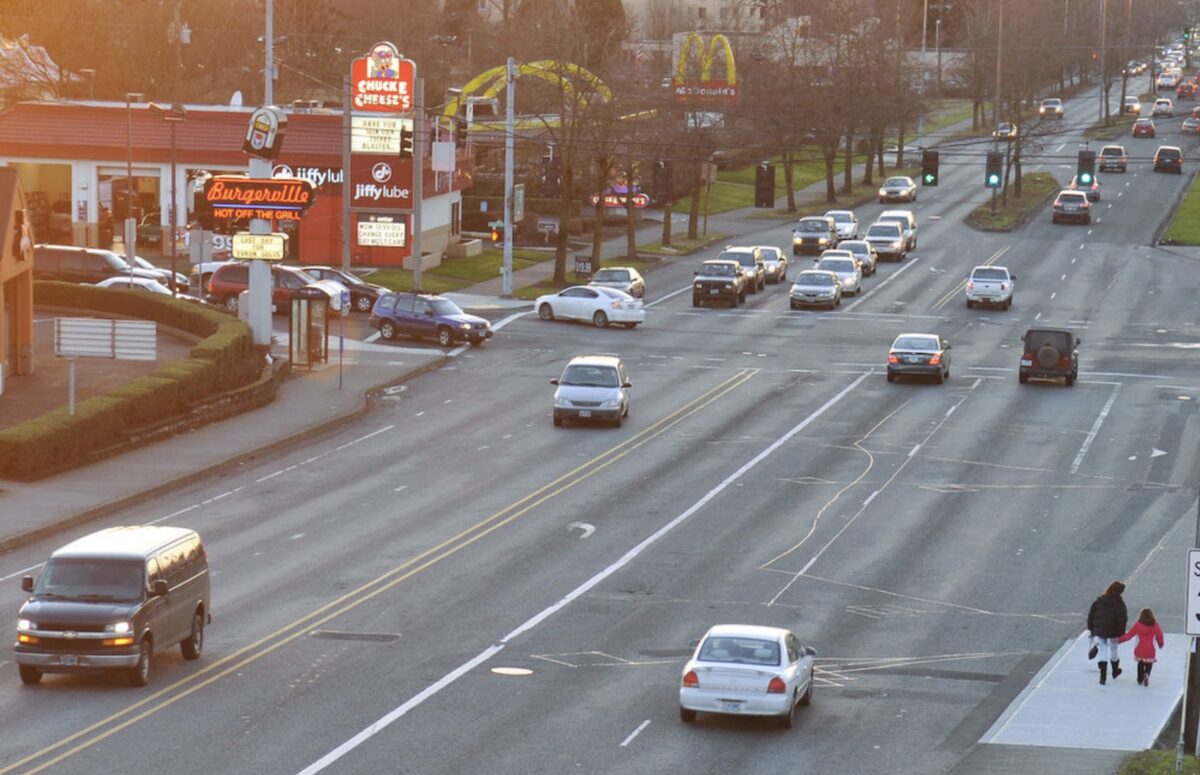
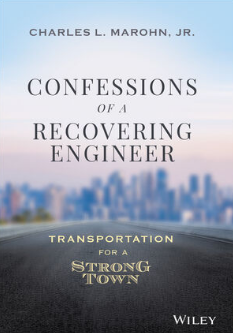
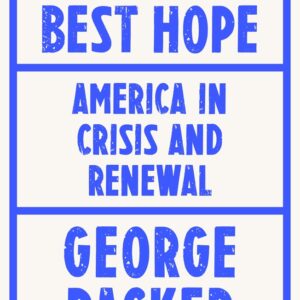

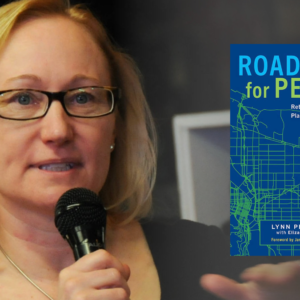
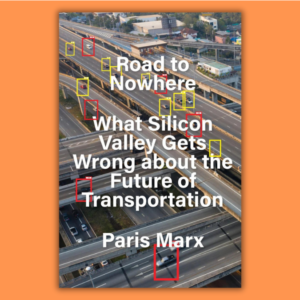
Thanks for reading.
BikePortland has served this community with independent community journalism since 2005. We rely on subscriptions from readers like you to survive. Your financial support is vital in keeping this valuable resource alive and well.
Please subscribe today to strengthen and expand our work.
Dang I missed that spoiler alert parenthetical
So sorry Nick. I’ll edit a bit and make the warner more clear.
Crikey – I hope the author has recovered to the point where he ditched the SUV and promised never to go near one again, not even as a passenger.
Which reminds me: I once arrived at Las Vegas airport and, being forced to take a taxi (no public transit), I walked down an entire row of SUV-taxis before finding a regular car-taxi and opting for that. The taxi driver thought I was nuts.
Thanks, Lisa, for the review. This author makes a lot of sense.
I also highly recommend his first book, “Strong Towns”.
Having read this book, I propose we raise money to have a copy delivered to EACH desk at PBOT for Chistmas. A lump of coal in their stocking, or a pony, depending on recipient.